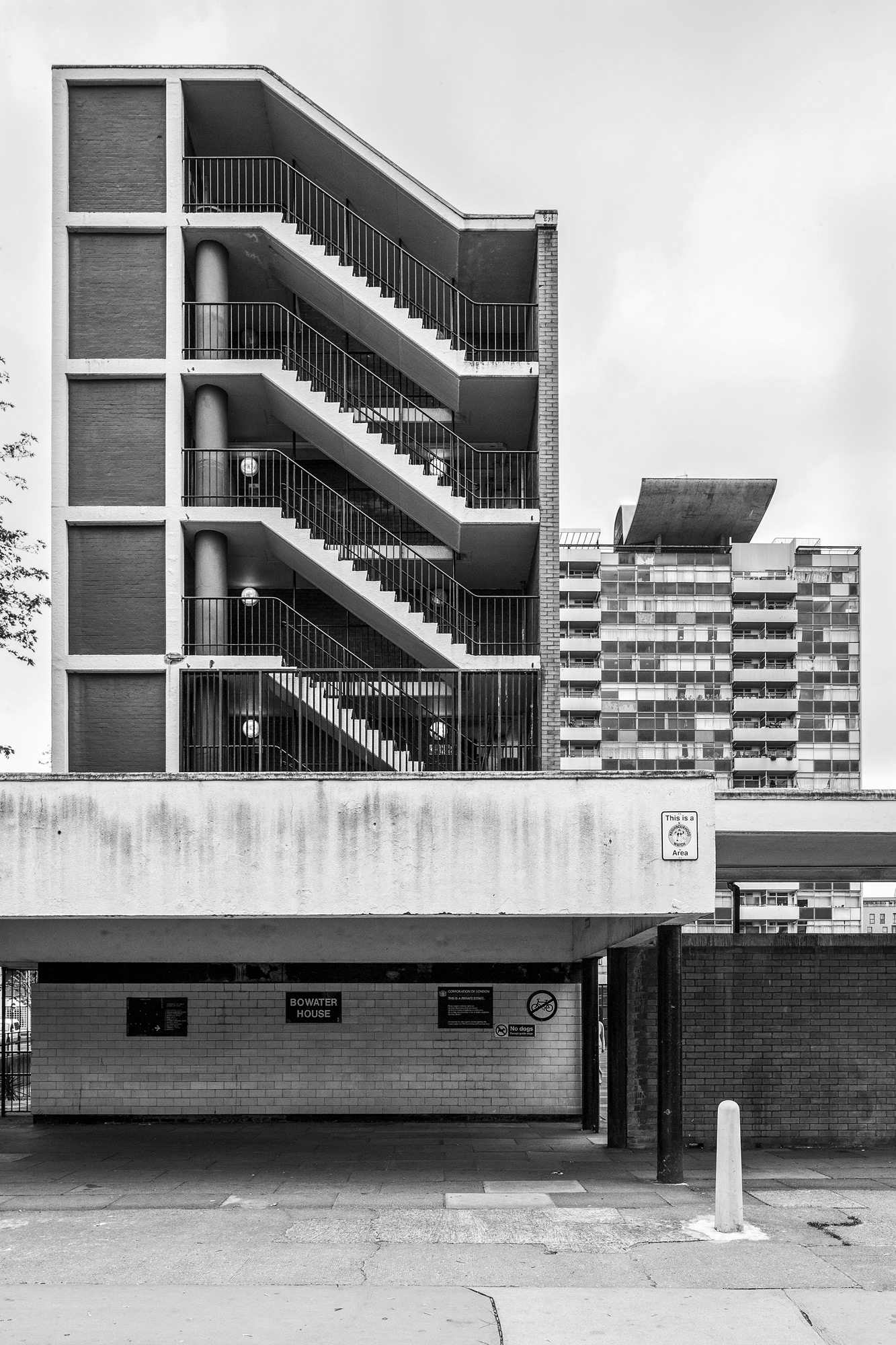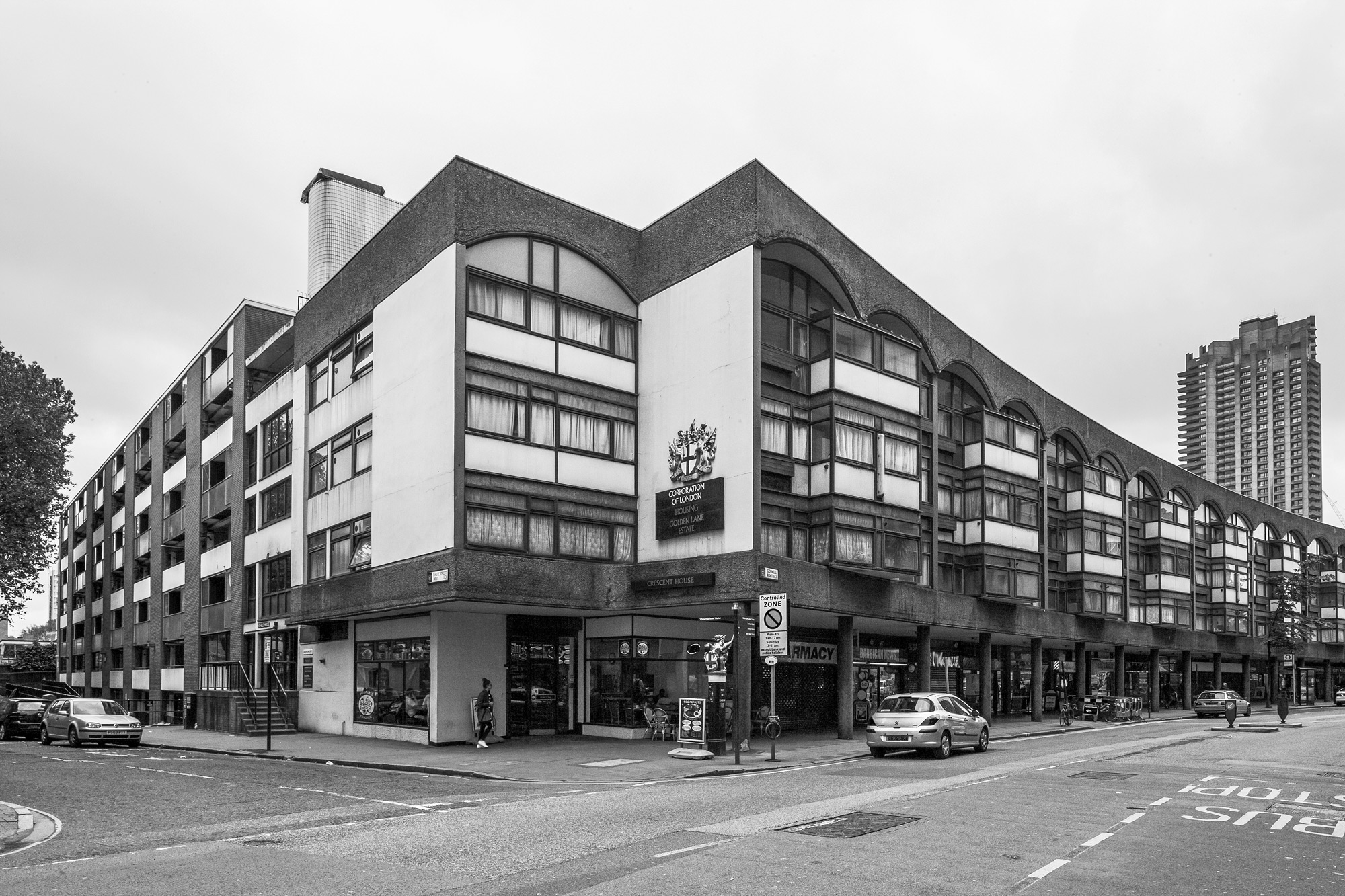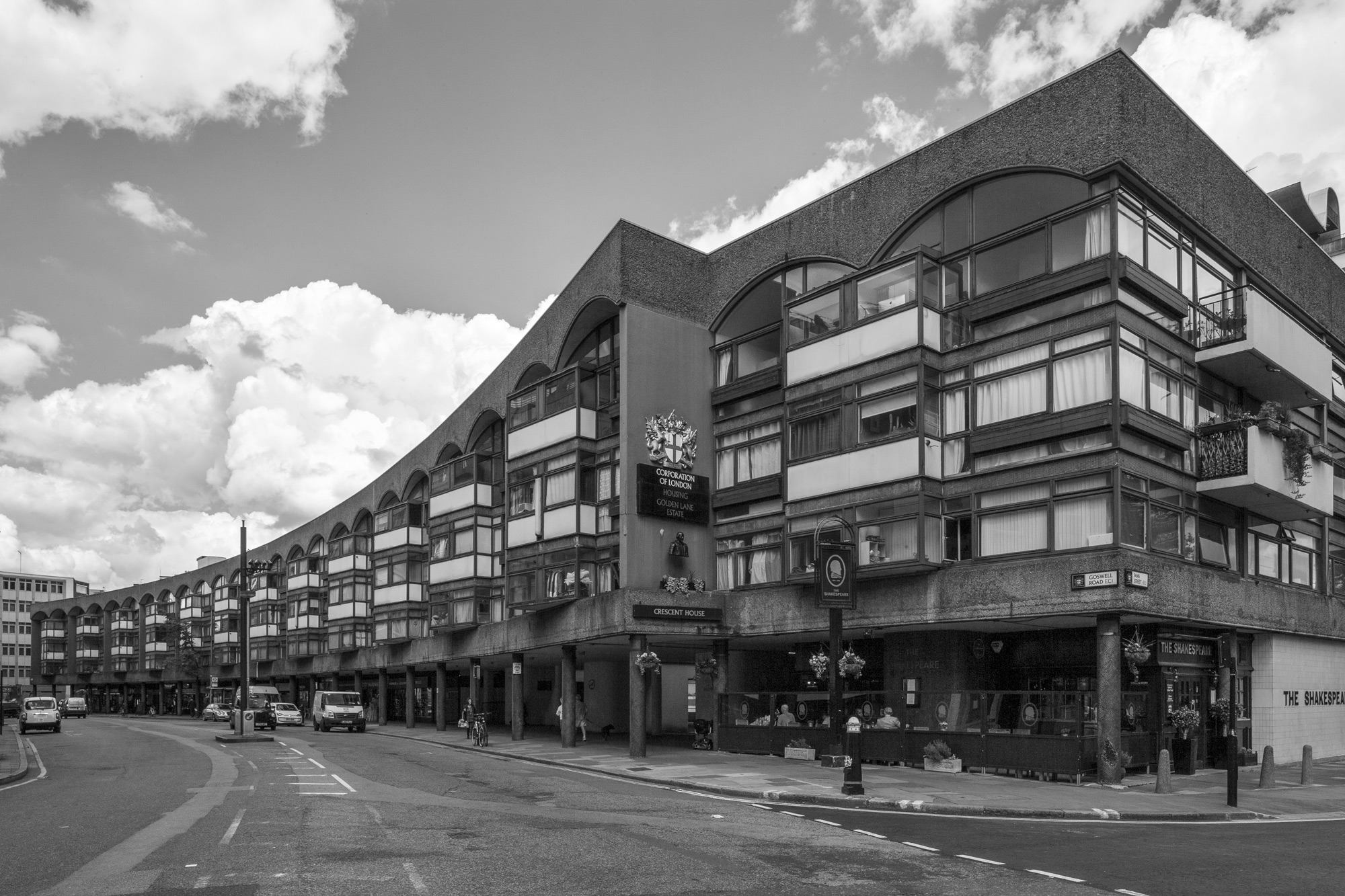Chamberlin, Powell and Bon
City of London
1952-63
The Golden Lane Estate was built between 1952 and 1963 to the designs of the architectural practice Chamberlin, Powell and Bon. The brief was for 940 mainly small flats but this was later expanded following the purchase of additional land. As completed, the estate contained 1400 flats and maisonettes, a swimming pool and badminton court, a bowling green (now tennis courts), a nursery and playground, a community centre and club room, a row of shops and a pub; the Shakespeare. The basic layout is of a 17-storey tower of small flats; Great Arthur House, surrounded by three and six-storey mainly linear blocks of larger flats and maisonettes and communal facilities with some green spaces between. The philosophy behind it was to account for every element of space, provision of a wide range of facilities and replacement of the pre-war road pattern, making an inward-facing development around a series of courtyards.
The buildings are largely built of reinforced concrete or load-bearing brick. The blocks are clad with opaque glazing; the maisonettes with blue and dark-red Pilkington glass panels and Great Arthur house with golden yellow ‘Muro’ glass in aluminium frames. The finishes include bush-hammered concrete and pick-hammering, among much else. Great Arthur House has a curved oversailing roof feature concealing the lift mechanism and water tanks. The rooftop also provided, as built, a garden with a pergola, stepping stones and pool. The tower was for a short time the tallest inhabited building in England, breaking the London County Council’s 100 ft height restriction. The architectural quality of the estate has been heavily lauded; contemporaries such as Ian Nairn acknowledged its ‘powerful sense of place’. Latterly it has been considered the most successful of England’s housing developments from the early 1950s.
Listed: Grade ll



